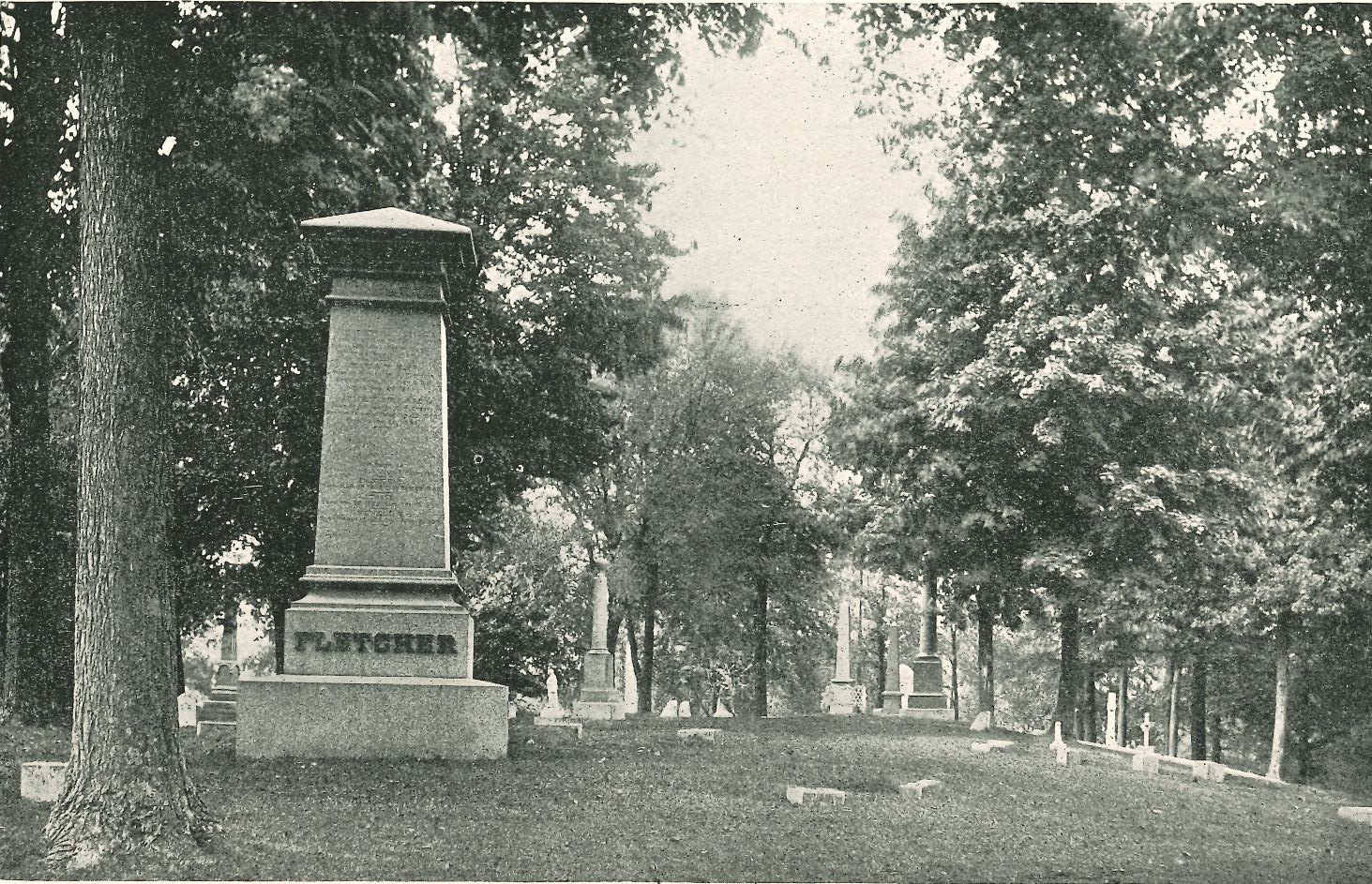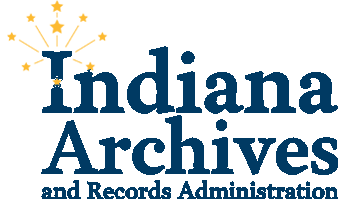Crown Hill Cemetery 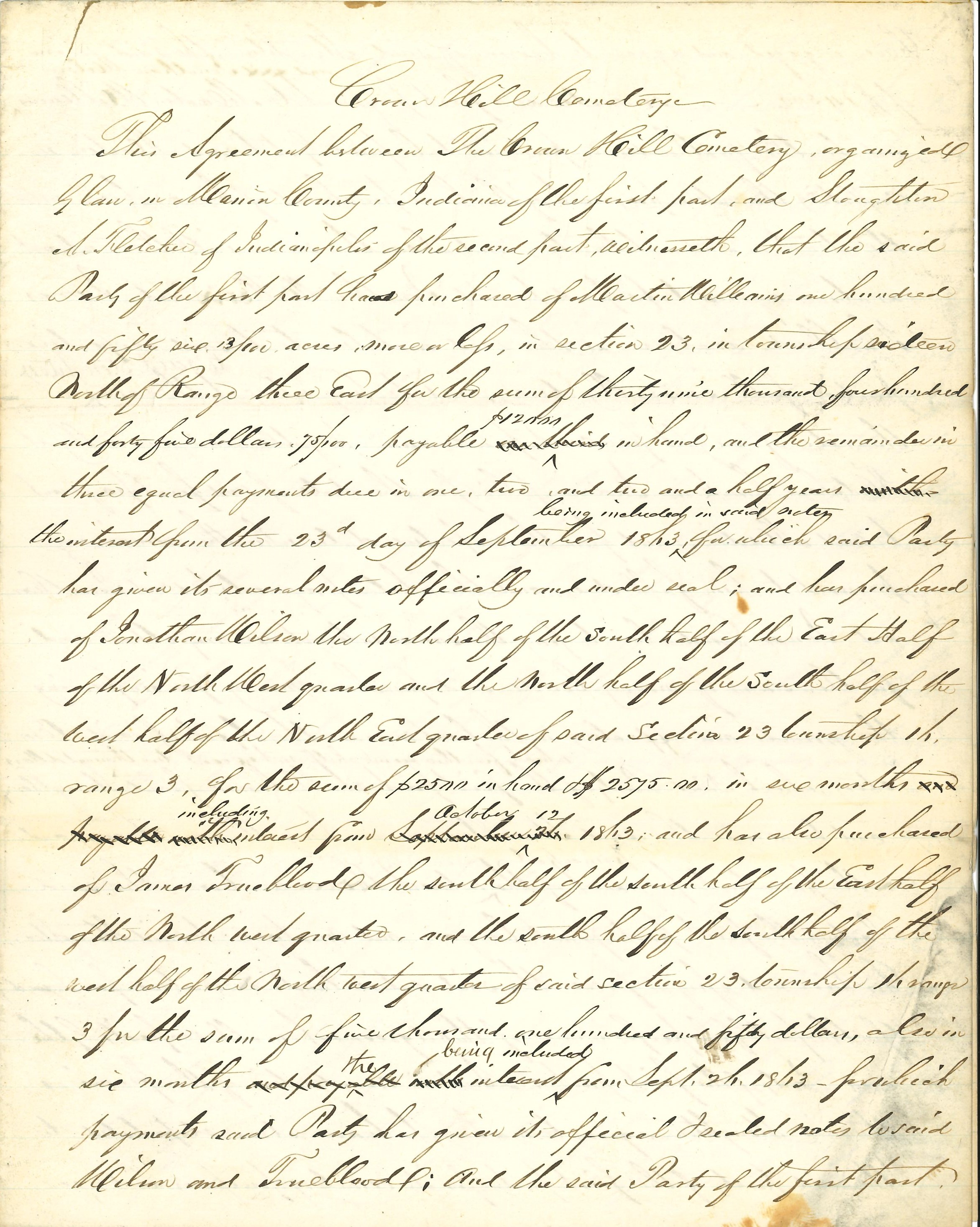
During the summer of 1863, civic leaders acted to resolve the need for a new cemetery in Indianapolis. Greenlawn Cemetery, an amalgamation of three cemeteries serving as the city cemetery, was at capacity. The added deaths of Union soldiers and Confederate prisoners placed an extra burden on Greenlawn during the Civil War.
Details on the formation of Crown Hill can be found in the Indiana State Archives Auditor of State Land Office collections. A small collection of correspondence regarding the cemetery includes letters and documents written by its early founders.
Local businessmen James M. Ray and Stoughton A. Fletcher recognized the immediate need to find a new burial ground. Fletcher agreed to advance the money for the purchases of land with the understanding that he would receive half the profits until he was compensated for his loan. Ray and Fletcher planned to use the remainder of the profits for the upkeep of the grounds.
They formed the Rural Cemetery Association and set about acquiring properties. Several purchases on the city’s northwest side near the Michigan Road, included “Williams Hill”, owned by Martin Williams, which became the inspiration for the name and most prominent feature of Crown Hill Cemetery. That same day, October 12, 1863, John and Drusilla Wilson and James and Jane Trueblood sold their property to the Association. In February of 1864, Henry and Levi Wright sold additional acreage to the cemetery. The Association acquired other properties later.
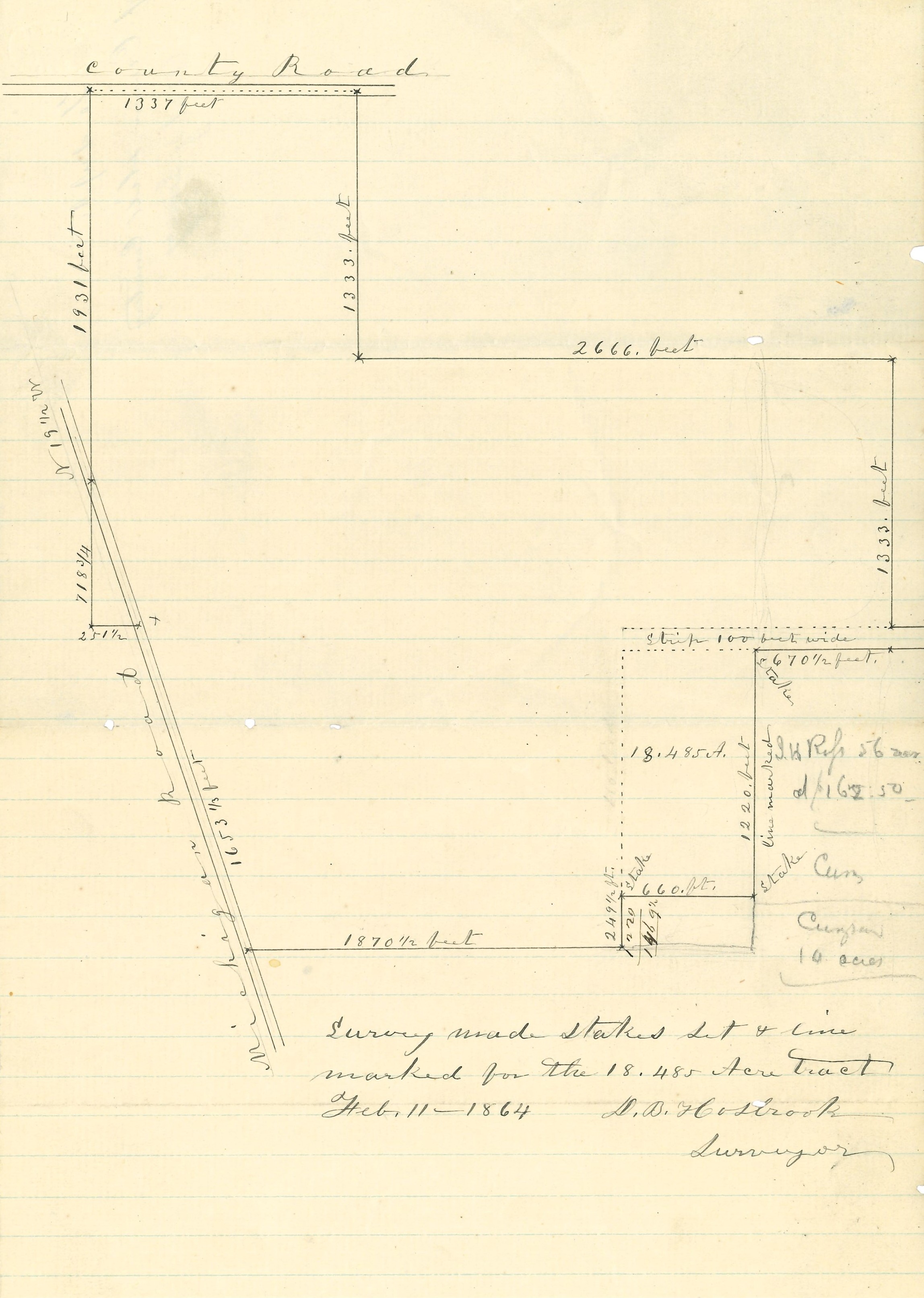 Though it is hard to conceive of a different location, there is some indication that Ray considered another property closer to the city center. Cemetery consultant John Chislett of the Allegheny Cemetery in Pittsburgh, wrote words of encouragement to Ray, before leaving Pennsylvania to come to Indianapolis as a consultant. “I do not think you have cause to regret loosing [sic] the nearest site to your city, for some of the greatest errors that are committed result from locating the cemeteries too near the city.”
Though it is hard to conceive of a different location, there is some indication that Ray considered another property closer to the city center. Cemetery consultant John Chislett of the Allegheny Cemetery in Pittsburgh, wrote words of encouragement to Ray, before leaving Pennsylvania to come to Indianapolis as a consultant. “I do not think you have cause to regret loosing [sic] the nearest site to your city, for some of the greatest errors that are committed result from locating the cemeteries too near the city.”
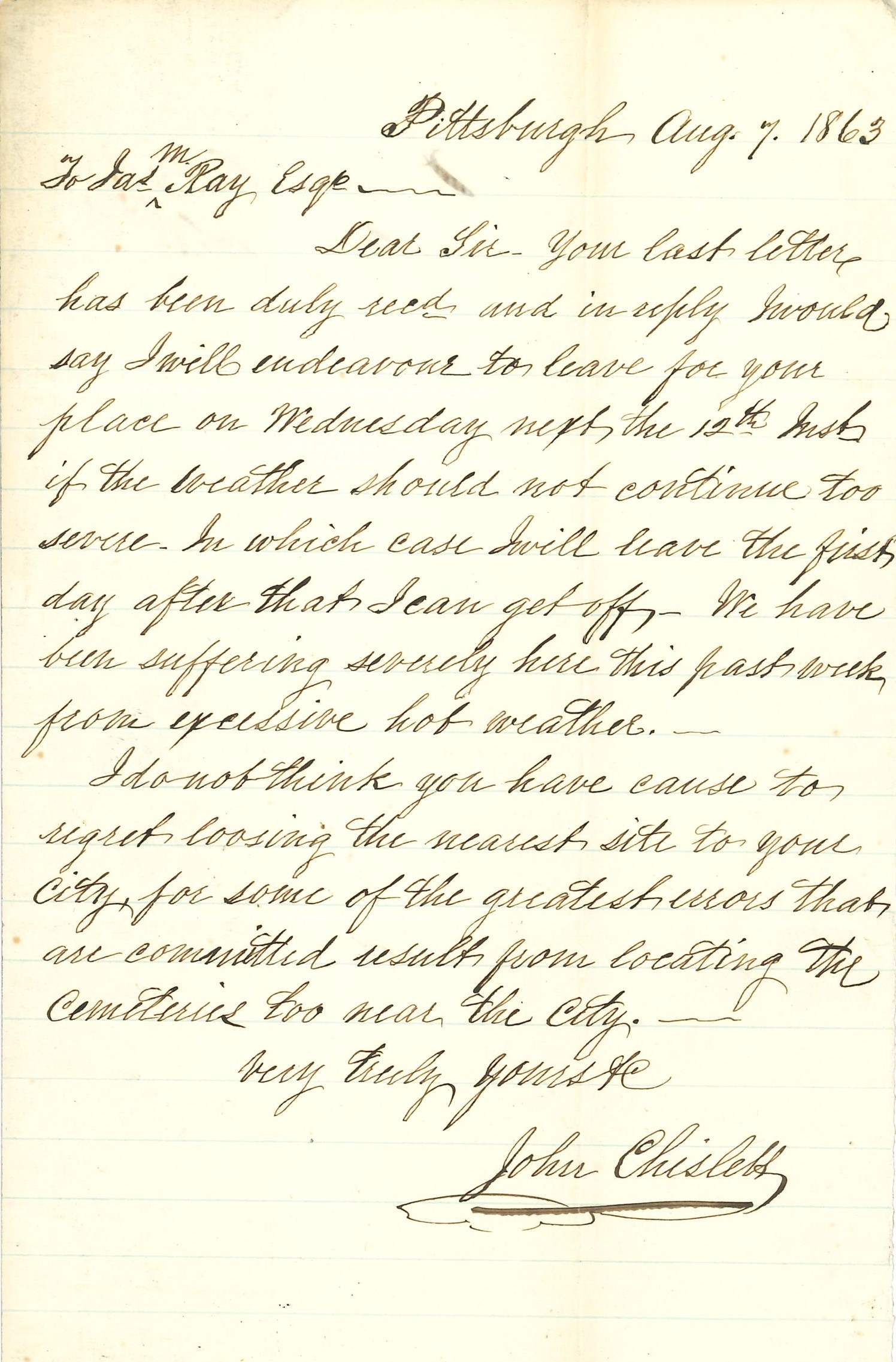
John Chislett’s son Fredrick was hired as the Superintendent and began the work of laying out the cemetery grounds.
In his diary, Calvin Fletcher, Sr., father of Stoughton A. Fletcher, recalled meeting the “gentleman from Pittsburgh” and going along with his son and the others to view the property before the purchase. Months later, the day before the June 1st opening, he wrote, “Mrs. F & I went to see the new cemetery. It looked too rude and badly fixed to hold the dedication tomorrow.” He did not attend the ceremony the next day.
The following week, when the first lots were to be auctioned, Fletcher mused that even though he served as one of the elected members of the board he felt, “as I did with the sale of lots in the old graveyard—no spirit of rivalry where I shall be buried—cannot compeat [sic] with my neighbor in this matter. He may have any place he chooses & I will lay down where it may be quiet, if the spot can be found.” Yet he recalled his first wife, Sarah, and other family members who were buried at Greenlawn, and thought about moving most of their graves to the new cemetery. Within a few weeks, Fletcher prepared to reinter the bodies of Sarah and two of their children at Crown Hill.
For more on Crown Hill Cemetery visit their website at: https://crownhillhf.org/visit/
